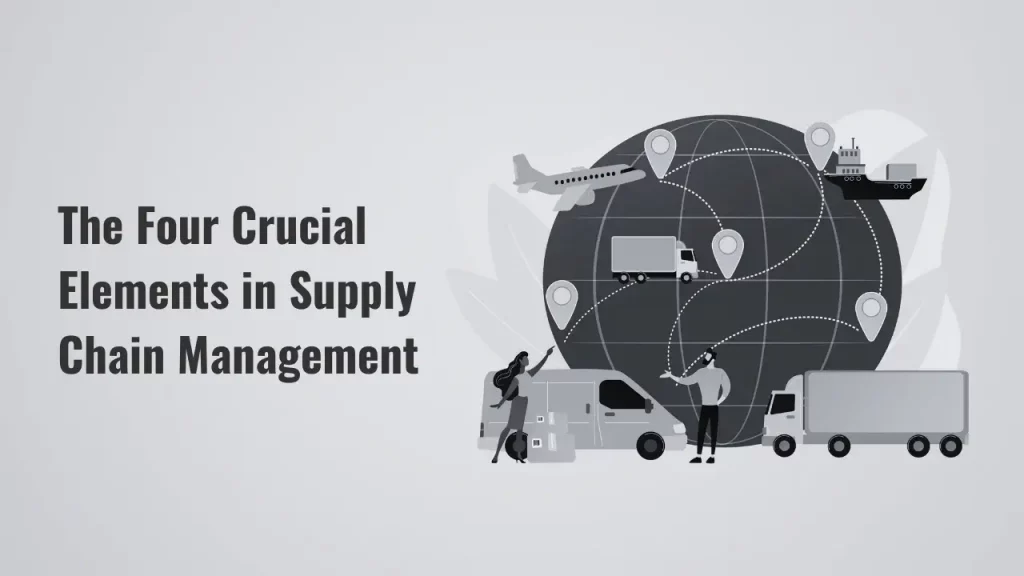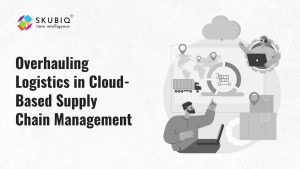Supply chain management is a complex and dynamic process that plays a critical role in the success of any business. It involves the coordination and integration of various activities and functions to ensure the seamless flow of products or services from the manufacturer to the end consumer. In this article, we will delve into the four crucial elements of supply chain management that form the backbone of this intricate system.
The Key Components of Supply Chain Management
A well-crafted supply chain strategy, prioritizing essential elements, yields numerous benefits, supporting your business strategy, enhancing customer relationships, and improving efficiency, performance, response, and quality.
1. Integration
Integration is foundational, commencing during strategic planning and remaining pivotal in communications, information sharing, and data analysis and storage. A unified, accurate information source for supply chain Management activities minimizes human errors, delays, shortages, and over/under-stocking. This approach enables proactive planning and mitigation of supply issues or interruptions.
Assess your technology needs, selecting a solution with the right tools for comprehensive supply chain integration. Flexibility is key, to ensuring adaptability to changing business dynamics.
2. Operations
Operations demand a real-time representation of inventory and production schedules for monitoring output and forecasting production and distribution patterns. Appropriate software aligns operations with the broader business, providing reliable information on production and current inventories for more efficient fulfillment processes.
Predict interruptions and challenges, enhancing profitability by reducing their impact. Streamline operational processes to facilitate a smoother, cost-effective path to fulfillment.
3. Purchasing
Effective supply chain software significantly contributes to sourcing products and leveraging competitive pricing and reliable products. Demand forecasting provides a practical method to ensure the right products, in the right quantities, are available when needed.
Keep track of suppliers, competing producers, and demand cycles to reduce operating costs across the sourcing and purchasing process.
4. Distribution
Transport, delivery, and returns constitute a supply chain component perpetually open to simplification, optimization, and correction for improved client service and reduced operating costs.
Centralize the delivery and returns process, providing a real-time view of inventory, order status, and stock location regardless of whether an order originated in-store or online. With diverse stock origin options, create a streamlined and centralized process for enhanced efficiency and reduced costs.
The Role of Technology in Supply Chain Management
Technology plays a pivotal role in the realm of supply chain management, reshaping traditional practices and ushering in a new era of efficiency and innovation. From advanced software solutions to cutting-edge analytics, technology offers a myriad of tools to enhance visibility, streamline processes, and optimize decision-making.
One of the key contributions of technology is the development of sophisticated supply chain management systems. These systems leverage automation and data-driven insights to provide real-time information on various aspects of the supply chain, from inventory levels to transportation logistics. This not only improves the overall responsiveness of the supply chain but also enables companies to proactively identify and address potential bottlenecks and disruptions.
Furthermore, the integration of artificial intelligence (AI) and machine learning in supply chain processes has revolutionized forecasting and demand planning. These intelligent systems analyze historical data, market trends, and external factors to predict demand with unprecedented accuracy. This, in turn, empowers businesses to optimize inventory levels, reduce excess stock, and enhance overall resource utilization.
Technology also facilitates seamless collaboration and communication among supply chain partners. Cloud-based platforms and collaborative tools enable real-time information sharing, fostering a more connected and agile supply chain network. This interconnectedness not only enhances visibility but also allows for quick and informed decision-making, particularly in the face of unexpected challenges.
Challenges and Solutions in Supply Chain Management
The landscape of supply chain management is riddled with challenges that demand adaptive strategies for sustained efficacy. The spectre of disruptions, be they natural disasters or geopolitical events, looms large, underscoring the need for robust contingency plans.
Dynamic consumer demands add another layer of complexity, necessitating agile approaches to prevent overstocking or shortages. Additionally, the contemporary emphasis on transparency and sustainability places pressure on businesses to adopt ethical sourcing practices.
Faced with these challenges, businesses are increasingly turning to technological interventions. Artificial intelligence and machine learning are deployed to refine demand forecasting, minimizing the impact of demand fluctuations. Comprehensive supply chain management systems provide centralized data hubs, offering real-time insights for proactive issue identification and resolution.
Simultaneously, a growing awareness of environmental concerns propels the adoption of sustainable practices and ethical sourcing, not just as ethical imperatives but as strategic moves to fortify supply chains against future uncertainties.
Conclusion
In conclusion, the success of any business is intricately tied to the effectiveness of its supply chain management. By understanding the fundamental elements of supply chain management, including the supply chain management process, supply chain integration, components of supply chain management, and supply chain warehouse management, companies can create a robust and resilient supply chain.
Moreover, the integration of advanced supply chain management systems and the adoption of innovative supply chain management solutions are crucial in overcoming the challenges posed by a rapidly changing business landscape. As technology continues to evolve, businesses must adapt and leverage these tools to stay ahead in the highly competitive world of supply chain management.




